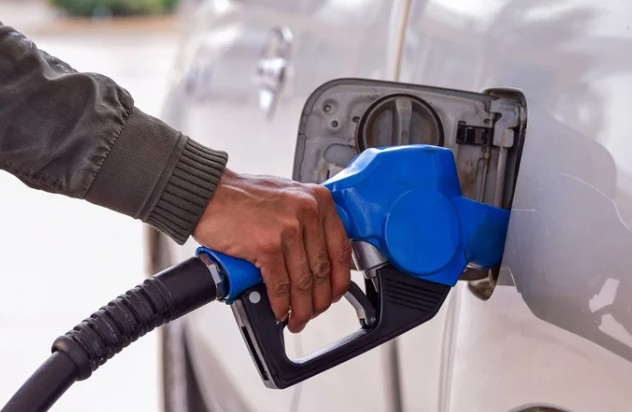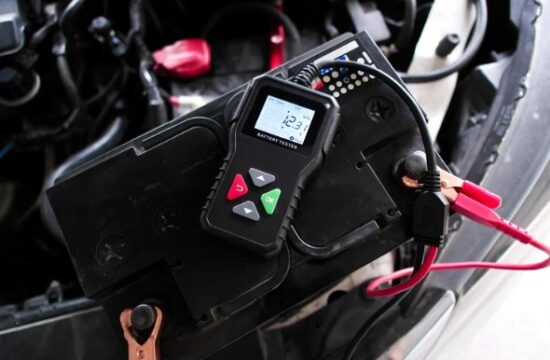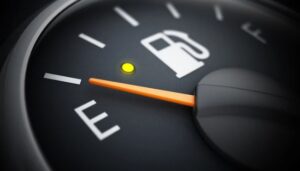A car’s fuel system is the lifeline that powers your engine, delivering the right amount of fuel at the right time. When it works correctly, your vehicle runs smoothly and efficiently. But when problems arise, they can lead to poor performance, reduced fuel economy, and even engine damage. Understanding how to diagnose issues within this complex system is a valuable skill for any car owner.
Symptoms of a Faulty Fuel System

Recognizing the early warning signs of a fuel system problem can save you from more significant repairs down the road. If you notice any of the following symptoms, it’s a good idea to investigate further.
Trouble Starting the Engine
One of the most common signs of a fuel system issue is difficulty starting your car. If the engine cranks but won’t turn over, it might not be receiving the fuel it needs. This could be due to a weak fuel pump, a clogged filter, or faulty injectors.
Poor Acceleration and Power Loss
Does your car feel sluggish when you press the gas pedal? A lack of power, especially during acceleration or when climbing hills, often points to a fuel delivery problem. When the engine doesn’t get a consistent supply of fuel, it can’t produce the power you demand.
Reduced Fuel Economy
If you find yourself making more frequent trips to the gas station without a change in your driving habits, a faulty fuel system could be the culprit. Leaks in fuel lines or inefficient fuel injectors can cause your vehicle to consume more fuel than necessary.
Engine Misfires and Rough Idling
An engine that sputters, shakes, or idles erratically may be experiencing a fuel-related misfire. This happens when one or more cylinders don’t receive the proper air-fuel mixture, leading to incomplete combustion. This can be caused by clogged fuel injectors or a failing fuel pressure regulator.
Check Engine Light
Modern vehicles are equipped with an on-board diagnostics (OBD-II) system that monitors engine performance. If the system detects a problem with the fuel mixture or pressure, it will trigger the check engine light. Using an OBD-II scanner can provide specific diagnostic trouble codes (DTCs) that point to the root cause.
Tools Needed for Diagnostics

Having the right tools is essential for accurately diagnosing fuel system problems. While a professional mechanic will have an extensive toolkit, here are some basic tools that can help you get started:
- Fuel Pressure Gauge: This is one of the most critical tools for fuel system diagnostics. It measures the pressure in the fuel lines, helping you determine if the fuel pump and regulator are working correctly.
- OBD-II Scanner: For vehicles made after 1996, an OBD-II scanner is invaluable. It reads the trouble codes stored in your car’s computer, providing direct clues about what might be wrong.
- Multimeter: A digital multimeter can be used to test electrical components of the fuel system, such as the fuel pump’s wiring, relays, and fuses.
- Noid Lights: These simple test lights are used to check if the fuel injectors are receiving the electrical signals needed to open and close.
- Basic Hand Tools: A good set of wrenches, sockets, and screwdrivers will be necessary for accessing and removing various components.
Also Read: Filing an Insurance Claim After a Car Accident
Step-by-Step Diagnostic Procedures
Once you have your tools ready, you can begin the diagnostic process. Follow these steps systematically to narrow down the potential issues.
1. Check for Diagnostic Trouble Codes (DTCs)
Start by connecting an OBD-II scanner to your vehicle’s port, usually located under the dashboard on the driver’s side. Turn the ignition to the “On” position without starting the engine. The scanner will retrieve any stored codes. Codes related to the fuel system often start with “P0,” such as P0300 (Random Misfire) or P0171 (System Too Lean). Research the specific codes to understand their meaning.
2. Test the Fuel Pressure
Connect a fuel pressure gauge to the Schrader valve on the fuel rail. The location of this valve varies by vehicle, so consult your owner’s manual. With the gauge connected, turn the key to the “On” position to prime the system, then start the engine. Compare the pressure reading to the manufacturer’s specifications. Low pressure could indicate a weak fuel pump or a clogged filter, while high pressure might point to a faulty fuel pressure regulator.
3. Inspect the Fuel Pump and Relay
Listen for a humming sound from the fuel tank area when you turn the key to the “On” position. This sound indicates the fuel pump is priming. If you hear nothing, the pump may not be receiving power. Use a multimeter to check the fuel pump fuse and relay in the vehicle’s fuse box. If the fuse and relay are good, you may need to test the wiring to the pump itself.
4. Examine the Fuel Injectors
If you suspect an issue with the fuel injectors, you can use a set of noid lights. Disconnect the electrical connector from an injector and plug in the corresponding noid light. Have a helper crank the engine. The noid light should flash, indicating that the injector is receiving a signal from the engine control unit (ECU). If it doesn’t flash, there may be an electrical problem. If it does flash, the injector itself might be clogged or mechanically failed.
Common Issues and Solutions

- Clogged Fuel Filter: The fuel filter traps debris before it can reach the engine. Over time, it can become clogged, restricting fuel flow. Solution: Replace the fuel filter according to your vehicle’s maintenance schedule.
- Failing Fuel Pump: A weak or failing fuel pump can’t supply enough pressure to the system. Solution: This typically requires replacing the fuel pump assembly, which is often located inside the fuel tank.
- Dirty Fuel Injectors: Carbon deposits can build up on fuel injectors, disrupting their spray pattern and reducing efficiency. Solution: Using a quality fuel injector cleaner can sometimes resolve minor clogs. For more severe cases, professional injector cleaning or replacement may be necessary.
- Faulty Fuel Pressure Regulator: This component maintains the correct pressure in the fuel rail. If it fails, pressure can become too high or too low. Solution: Replace the faulty regulator.
Preventative Maintenance Tips
Keeping your fuel system in good health can prevent many common problems. Follow these tips to ensure reliability and performance:
- Use High-Quality Fuel: Cheaper gasoline can contain more impurities that can clog filters and injectors over time.
- Replace the Fuel Filter Regularly: Follow the manufacturer’s recommended interval for fuel filter replacement.
- Use a Fuel System Cleaner: Periodically add a quality fuel system cleaner to your gas tank to help remove carbon deposits and keep injectors clean.
- Don’t Run on Empty: Regularly driving with a very low fuel level can cause the fuel pump to overheat and fail prematurely, as the fuel itself helps cool the pump.
- Regular Inspections: Problems like failing emissions tests in Orem can sometimes be linked back to the fuel system. Regular check-ups can catch issues early.
Conclusion
A well-maintained fuel system is essential for the health, efficiency, and power of your vehicle. By learning to recognize symptoms, using the right tools, and following a logical diagnostic process, you can identify and address issues before they become major problems. Regular preventative maintenance will go a long way in keeping your car running smoothly for years to come.









